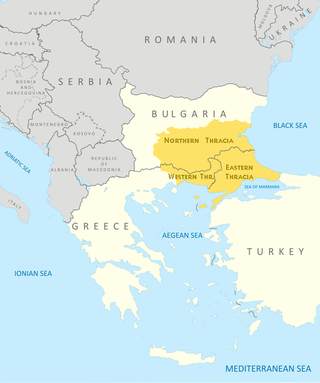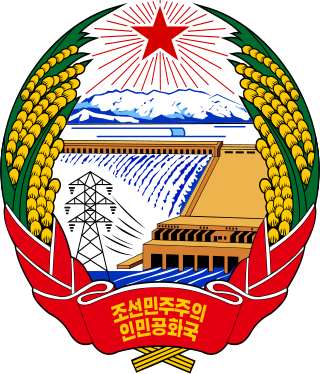
 |
|---|
Subdivisions of Bulgaria:
- Provinces of Bulgaria – first level
- City of Sofia – first level
- Municipalities of Bulgaria

 |
|---|
Subdivisions of Bulgaria:
After the liberation of Bulgaria, the country administrative were divided to 12 provinces (Bulgarian: губернии).
After 1880 Kingdom of Bulgaria were separated to 21 Okrazhiya (in English: regimental). During the years to 1885 Eastern Rumelia, where were living Bulgarians (around 92%) administrative separated to 6 departments.
| Level | Subdivisions | # |
|---|---|---|
| NUTS 1 | Regions (Rajoni) | 2 |
| NUTS 2 | Planning regions (Rajoni za planirane) | 6 |
| NUTS 3 | Oblasts (Podregiony) | 28 |
| Level | Subdivisions | # |
|---|---|---|
| LAU 1 | Municipalities (Obshtini) | 264 |
| LAU 2 | Settlements (Naseleni mesta) | 5329 |
A county is a geographic region of a country used for administrative or other purposes in some nations. The term is derived from the Old French comté denoting a jurisdiction under the sovereignty of a count (earl) or a viscount. Literal equivalents in other languages, derived from the equivalent of "count", are now seldom used officially, including comté, contea, contado, comtat, condado, Grafschaft, graafschap, and zhupa in Slavic languages; terms equivalent to 'commune' or 'community' are now often instead used.

Thrace is a geographical and historical region in Southeast Europe. Bounded by the Balkan Mountains to the north, the Aegean Sea to the south, and the Black Sea to the east, it comprises present-day southeastern Bulgaria, northeastern Greece, and the European part of Turkey, roughly the Roman Province of Thrace. Lands also inhabited by ancient Thracians extended in the north to modern-day Northern Bulgaria and Romania and to the west into Macedonia.

Local government is a generic term for the lowest tiers of governance or public administration within a particular sovereign state.
A prefecture is an administrative jurisdiction traditionally governed by an appointed prefect. This can be a regional or local government subdivision in various countries, or a subdivision in certain international church structures, as well as in antiquity a Roman district.
The administrative divisions of China have consisted of several levels since ancient times, due to China's large population and geographical area. The constitution of China provides for three levels of government. However in practice, there are five levels of local government; the provincial, prefecture, county, township, and village.
An oblast is a type of administrative division in Bulgaria and several post-Soviet states, including Belarus, Russia and Ukraine. Historically, it was used in the Russian Empire and the Soviet Union. The term oblast is often translated into English as region or province. In some countries, oblasts are also known by cognates of the Russian term.
The provinces of Thailand are administrative divisions of the government of Thailand. The country is divided into 76 provinces proper, with one additional special administrative area. They are the primary local government units and act as juristic persons. They are divided into amphoe (districts) which are further divided into tambon, the next lower level of local government.

The regions of Italy are the first-level administrative divisions of the Italian Republic, constituting its second NUTS administrative level. There are twenty regions, five of which are autonomous regions with special status. Under the Constitution of Italy, each region is an autonomous entity with defined powers. With the exception of the Aosta Valley and Friuli-Venezia Giulia (2018–2020), each region is divided into a number of provinces.

Provinces are the most numerous type of province-level divisions in the People's Republic of China (PRC). There are currently 22 provinces administered by the PRC and one province that is claimed, but not administered, which is Taiwan, currently administered by the Republic of China (ROC).

The Roman provinces were the administrative regions of Ancient Rome outside Roman Italy that were controlled by the Romans under the Roman Republic and later the Roman Empire. Each province was ruled by a Roman appointed as governor.

The administrative units of Pakistan comprise four provinces, one federal territory, and two disputed territories: the provinces of Punjab, Sindh, Khyber Pakhtunkhwa, and Balochistan; the Islamabad Capital Territory; and the administrative territories of Azad Jammu and Kashmir and Gilgit–Baltistan. As part of the Kashmir conflict with neighbouring India, Pakistan has also claimed sovereignty over the Indian-controlled territories of Jammu and Kashmir and Ladakh since the First Kashmir War of 1947–1948. It also has a territorial dispute with India over Junagadh, but has never exercised administrative authority over either regions. All of Pakistan's provinces and territories are subdivided into divisions, which are further subdivided into districts, and then tehsils, which are again further subdivided into union councils.

The provinces of Bulgaria are the first-level administrative subdivisions of the country.

Kyustendil Province is a province in southwestern Bulgaria, extending over an area of 3,084.3 km2 (1,190.9 sq mi), and with a population of 107,673. It borders the provinces of Sofia, Pernik, and Blagoevgrad; to the west, its limits coincide with the state borders between Bulgaria and North Macedonia, and between Bulgaria and the Republic of Serbia. The administrative center of the Province is Kyustendil.

Sliven Province is a province in southeastern Bulgaria, named after its administrative and industrial centre—the city of Sliven. It has a territory of 3,544.1 km2 (1,368.4 sq mi) that is divided into four municipalities, with a total population, as of December 2009, of 204,887.

Provinces are the first level administrative divisions of Sri Lanka. Currently, Sri Lanka is divided into 9 provinces. Each province is further divided into districts, which are further divided into divisional secretariats.

The administrative divisions of North Korea are organized into three hierarchical levels. These divisions were created in 2002. Many of the units have equivalents in the system of South Korea. At the highest level are nine provinces and four special municipalities. The second-level divisions are cities, counties, and districts. These are further subdivided into third-level entities: towns, dongs (neighborhoods), ris (villages), and workers' districts.
A raion is a type of administrative unit of several post-Soviet states. The term is used for both a type of subnational entity and a division of a city. The word is from the French rayon, and is commonly translated as "district" in English.
A province is an administrative division within a country or state. The term derives from the ancient Roman provincia, which was the major territorial and administrative unit of the Roman Empire's territorial possessions outside Italy. The term province has since been adopted by many countries. In some countries with no actual provinces, "the provinces" is a metaphorical term meaning "outside the capital city".

The 1876–77 Constantinople Conference of the Great Powers was held in Constantinople from 23 December 1876 until 20 January 1877. Following the beginning of the Herzegovinian Uprising in 1875 and the April Uprising in April 1876, the Great Powers agreed on a project for political reforms in Bosnia and in the Ottoman territories with a majority-Bulgarian population. The Ottoman Empire refused the proposed reforms, leading to the Russo-Turkish War a few months later.
Thailand is a unitary state, which means the territories are separated into central co-dependencies, with the central government deciding everything for the provinces. The kingdom is separated into multiple levels including regions, provinces, and many more. Though, formally, Thailand is separated into three levels: provinces, districts, and sub-districts, there are also informal divisions such as parimonthon, and phak. Furthermore, there are administrative divisions of the same level with different names such as the first-level divisions of the province and the special administrative region.